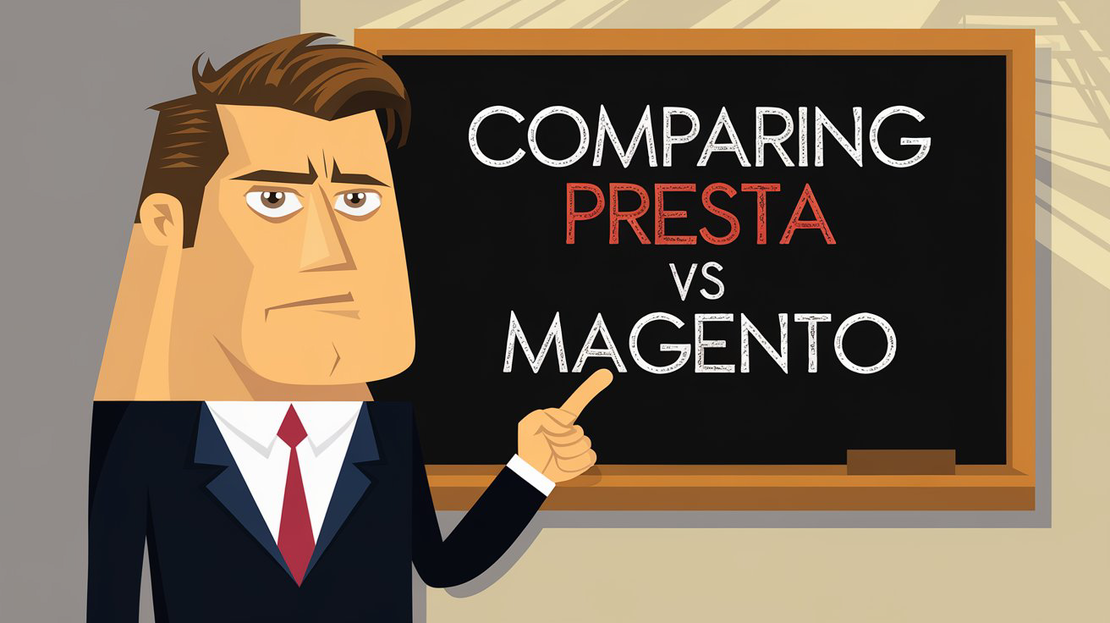
Presta vs Magento: B2B Business Insights
- Lukasz Pawlak
- Magento 2 , E commerce
- December 4, 2024
Table of Contents
Understanding the key differences between PrestaShop and Magento is essential for B2B businesses looking to optimize their online presence. In this article, we explore the core functionalities, pricing models, and integration capabilities of both platforms. We also examine how well each option supports bulk ordering, customer-specific pricing, and multi-user account management, critical features for successful B2B operations. Join us as we break down the best use cases for each platform to help you choose the right fit that aligns with your business goals and customer needs.
Understanding PrestaShop and Magento for B2B Success
Choosing the right eCommerce platform is crucial for boosting B2B online operations.
PrestaShop and Magento are two standout options, each bringing unique strengths to the table.
Magento, for example, is particularly powerful, offering over 25 B2B-focused reports that let businesses dig deep into their performance metrics.
These user-friendly dashboards provide insightful analytics that can guide strategic decisions.
Imagine being able to:
- Track customer purchasing behaviors
- Monitor inventory levels in real-time
- Analyze sales trends effortlessly
This level of insight empowers businesses to optimize their supply chain, tailor marketing campaigns, and enhance customer satisfaction—all key to staying competitive in the B2B world.
On the other hand, PrestaShop’s flexibility allows for extensive customization, making it a great fit for businesses with specific operational needs.
By carefully evaluating these platforms against your unique requirements, you can ensure that your technological foundation supports your growth ambitions effectively.
In a fast-changing market, making an informed choice can be the difference between stagnation and success.
Core Features and Pricing Models: PrestaShop vs. Magento
PrestaShop is a great option for small and mid-sized B2B businesses thanks to its low-cost entry point—there are no licensing fees involved. This makes it an attractive choice for companies with tighter budgets, allowing them to tap into solid e-commerce features without a major financial commitment. For example, a small manufacturer can use PrestaShop to create an online presence without the stress of significant costs, helping them compete more effectively in their niche.
On the other hand, Magento is positioned as a premium solution, with pricing starting around $22,000 annually. This higher cost reflects its extensive customization options and powerful features, making it ideal for larger enterprises that need tailored solutions. For instance, a global distributor might opt for Magento to handle:
- Complex product catalogs
- Multi-store setups
- Specific business needs
Ultimately, choosing between PrestaShop and Magento depends on the scale and scope of your business, as well as your budget. By understanding these pricing models and key features, you can align your platform choice with your operational goals, setting a solid foundation for future growth.
Evaluating B2B Functionality: Bulk Ordering, Pricing, and Account Management
Effective B2B operations rely on strong features like:
- Bulk ordering
- Pricing strategies
- Seamless account management
Magento shines in this regard with its advanced order management tools that simplify bulk ordering. Companies can handle high-volume transactions efficiently, meeting large customer demands without losing speed or accuracy. For example, a wholesale supplier can process thousands of orders in a single batch, ensuring timely deliveries and happy customers.
On the other hand, PrestaShop is known for its customer-specific pricing capabilities. This allows businesses to create personalized offers, which can greatly enhance client relationships. Picture a situation where a supplier adjusts pricing based on a long-term partnership, building loyalty and encouraging repeat business. This tailored approach not only boosts sales but also strengthens B2B connections.
Both platforms support multi-user account management, a crucial feature for teamwork within B2B teams. This functionality lets different team members access and manage accounts at the same time, improving communication and efficiency. For instance, a sales team can collaborate across various departments, making sure everyone stays informed about client needs and order statuses.
By taking advantage of these features, businesses can streamline their operations, increase sales, and foster stronger partnerships.
Summary
In the ongoing evolution of B2B e-commerce, the choice between PrestaShop and Magento stands out as a pivotal decision that can significantly influence operational success. Magento’s robust analytics capabilities, with over 25 B2B-focused reports, enable companies to gain deep insights into customer behaviors, inventory management, and sales trends. This level of data-driven decision-making fosters strategic agility, essential in today’s competitive landscape.
Conversely, PrestaShop’s flexibility and cost-effectiveness make it an appealing option for smaller enterprises seeking to establish a solid online presence without hefty investments. This raises a critical consideration: how can businesses leverage the strengths of each platform to align with their unique operational goals?
Moreover, the advanced order management tools in Magento cater well to high-volume transactions, suggesting a need for larger businesses to prioritize efficiency in their supply chain. Meanwhile, PrestaShop’s personalized pricing features encourage loyalty among clients, prompting a reflection on how relationship-driven strategies can enhance customer retention.
Ultimately, the decision boils down to a business’s scale, budget, and specific requirements. Are you prepared to invest in a premium solution like Magento for scalability, or will you harness the adaptability of PrestaShop for immediate growth? This choice could shape your competitive edge in the dynamic B2B sector.


